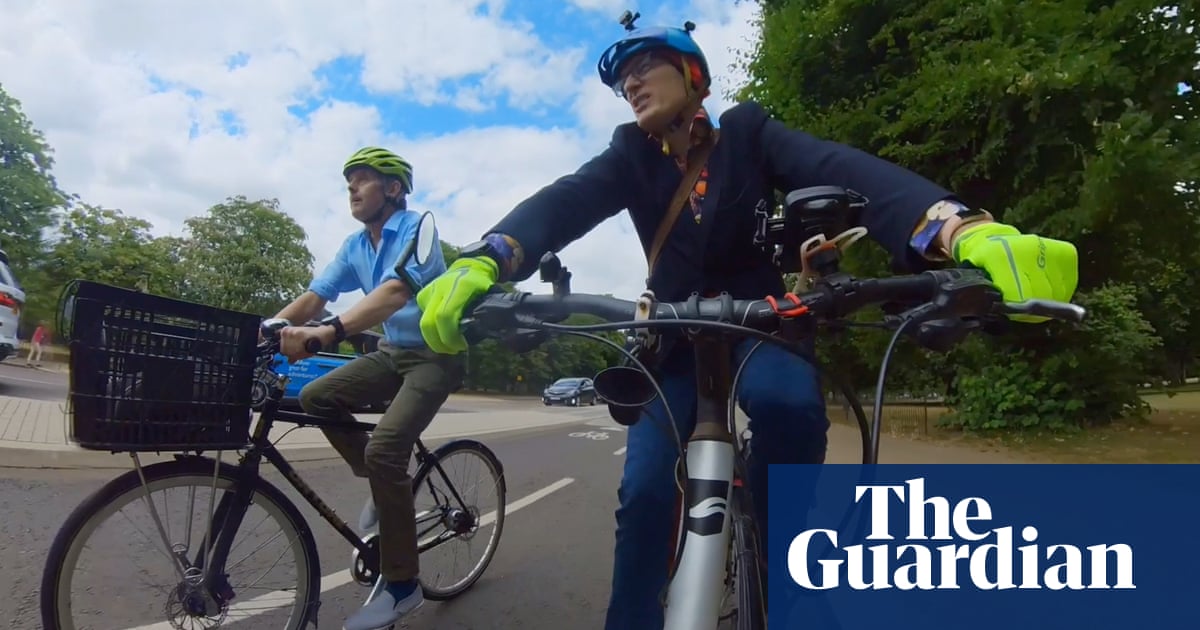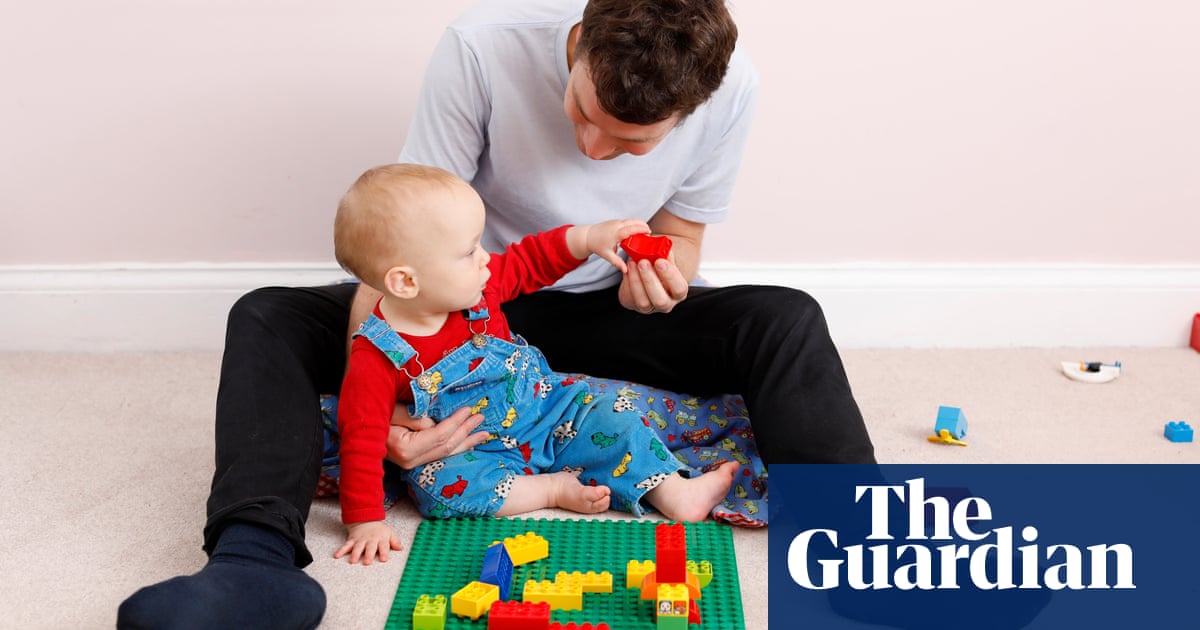How do I stop my dog pulling on the lead?
Firstly, make sure that you have got the right equipment, says Graeme Hall, AKA The Dogfather, a dog trainer, presenter of Dogs Behaving (Very) Badly and author of Does My Dog Love Me? “If you have got a harness, attach the lead to the chest instead of on the back, this gives you a bit of steering and you can move them sideways, which makes a difference.”
The next issue is the length of the lead. “If your lead is too short, you’ve already shot yourself in the foot, because the dog is going to pull against that tension. If you pull backwards, they automatically pull forwards, and that is where most dog pulling problems come from. If the lead is too long, the dog could get across the front of you and trip you over, or they can’t see you any more and they don’t really care – you are just there to be towed along.” To remedy this, Hall recommends a “J shape lead”: “If the dog’s shoulders are alongside your legs – this works for any size of dog – when you look down at your lead, it should go down slightly before it goes back up. If you’ve got a J shape lead, you’ve got enough slack for it not to be permanently tight, but it is not too long.”
For some insistent dogs it won’t be enough, he says, “so say ‘no’, firmly, but never aggressively or angrily. If using a well-fitting harness, it is OK to give a little tug backward, but it is very important that it should only be a nudge, not a hefty yank.” Then, once you’ve got the setup right, he says, “don’t forget to praise them when the lead is slack. It is so common for people to forget to reward the good bits because you are waiting for the bad bit to happen.”
What can I do to stop my dog being aggressive with other dogs?
“Safety comes first,” says Hall. “If you are particularly concerned about this, consult a dog trainer, because it is really important that you don’t make it worse.
“If you’ve got a dog that is really reactive to other dogs, distance is your friend. You can start training at a certain distance from where they have seen the other dog, but they are not yet reacting. If they are calm enough, and you’re far enough away, they will probably listen to you.”
Don’t force your dog to look away from the dog that is causing them distress. “We don’t want a dog that goes through life never looking at dogs,” says Hall. “Actually, it can make it worse, because what they are thinking is ‘where is that dog? I need to woof at it and try to get it to go away.’ They will be more anxious because they can’t see what the other dog is up to.” It is far better to teach them to look at the dog and learn that they don’t have to react, praising them when they don’t.
My dog chases sheep – is a shock collar ever OK?
“There are lots of ways of training a dog not to chase sheep, but I wouldn’t resort to an electric shock collar,” says Hall. “When it comes to sheep, I would just keep your dog on the lead. Sheep – and dogs – are really unpredictable. Even if you think Fluffy the cockapoo would never do such a thing, you could be surprised. Sheep can be literally scared to death: if a dog runs after them playfully, that can be enough for a sheep to have a heart attack. Just don’t go there with a zapper collar. There is no need. There are better, kinder ways of training dogs.”
How can I stop my dog jumping up?

“Jumping up is a really normal dog behaviour when dogs are excited,” says Amelia Steele, a dog trainer and behaviourist. “They want to be where you are and be close to your face. If you like it, you can let your dog jump up at you. If you don’t like it, we can prevent it and teach them to do something else,” says Steele.
If it is happening outside with strangers, keep the dog on a lead and reinforce better behaviours. If it is happening in the home, consider installing a safety gate so that when a person comes into the house, there is a barrier between them and the dog, which gives time for training.
“Teach an alternative behaviour first that they are really good at, such as sit or go to bed. Make that really high value for the dog, reward it a lot, and then put the two things together. When the person comes in, there is the management in place so that the dog can’t just go and jump up. Then we would look at rehearsing that behaviour that we want to enforce. It is about teaching them what you want them to do, rather than focusing on the negative.”
Can I train my dog to bark less?
The key, says Steele, is to look at why the dog is barking: “Are they scared of something? Are they alert barking? Are they overexcited and frustrated?” When you have figured this out, address that underlying emotion, says Steele.
“If a dog was barking at other dogs on a walk, we would look at if they are scared of other dogs, and change that association, to make it positive again. When the dog looks at another dog, give them a treat, so they feel good about seeing dogs.”
Some dogs naturally bark more than others, because of their breed or personality, says Steele. “I’ve got a golden retriever and a German shepherd. My German shepherd will bark at the door, while the golden retriever sits there staring blankly into space.”
Can I stop my dog being so needy?
“If you’re going to get a dog, expect them to want to spend time with you, because their entire genetic code is telling them to want to be with you,” says Steele. She encourages owners to change their expectations of dogs, “because I think we have the idea that we can get a dog, stick it in our house for a full day, and come back and they will be calm and chilled,” which is often anything but the case.
If your dog is needy, “make sure that you are giving them enough outlets so that they feel fulfilled by the relationship that they have with you,” she says. If your dog is suffering from separation anxiety, you can help them work on their independence by building up the amount of time you spend away from them, says Steele. But she adds: “I always encourage people to do more with their dog, to build that bond, rather than try to cut it off.”
I live in the city, how much exercise can I get away with?
“Stop thinking of walks as how far you go and think of them as ‘outings’,” says Louise Glazebrook, a dog whisperer and author of The Book Your Dog Wishes You Would Read. “Our dogs deserve outings where they get to be a dog and run, play, bark, sniff, and go in bushes. Simply trekking the streets and visiting little squares of grass is a wee break, not a walk.”
It can be difficult to estimate exactly how much exercise each dog needs, she adds, but consider age, activity levels and breed traits. “If you take on a working cocker spaniel, you can’t then be annoyed that it needs a gigantic amount of physical and mental stimulation and output. They are designed to be on the move and in fields working, so if you can’t meet that level of stimulation and output, your dog is going to struggle. If you choose the dog, it is your job to fulfil the dog.”
I’m spending all my spare cash on dog toys. Are they necessary?

“Dogs do need access to toys,” says Glazebrook. “Some are brilliant, others are cheap, contain grim materials and barely last.” She suggests avoiding microplastic-shedding nylon and to opt for natural materials or edible toys, such as pizzle sticks – a long-lasting chew that comes in different sizes. “I tend to keep some toys in a basket that mine have free access to and then I keep some that I only bring out to either play with them with, or that are treat dispensing. I do the same with chews, I believe dogs should have access to decent chews every single day. They can relieve boredom, stress and help to get rid of teething pain. I can’t bear items like the nylon chew bones – dogs chewing on cheap plastics and ingesting the particles is not what we want to be encouraging when there are excellent natural and healthy options out there.”
For a homemade toy for dogs that like to rip things up, “take a kitchen roll tube, put a treat inside, then stuff each end with paper and let them shred it up,” she says.

 4 hours ago
8
4 hours ago
8













































